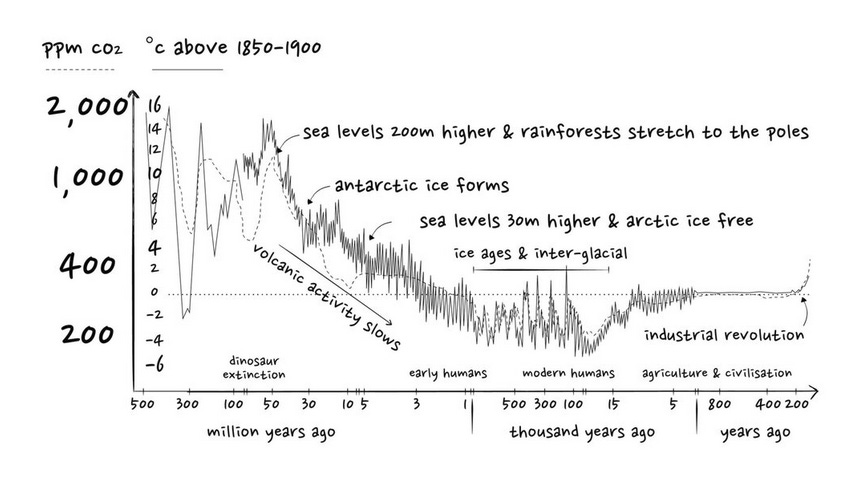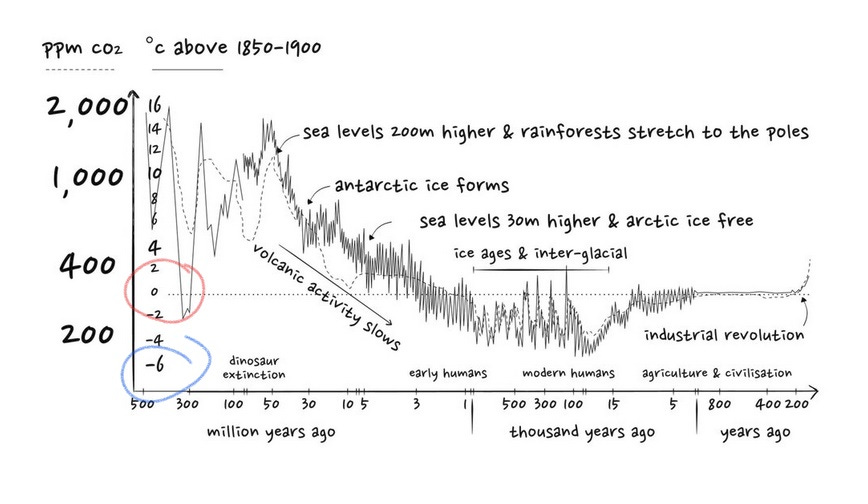The Crisis Report - 42
The time has come the Walrus said to talk of many things. In this case, let’s talk about “HEAT”.

I’m working on my next “political” Crisis Report. I am trying to coalesce what I think China’s next play will be in the current struggle for dominance with the US. They want a quick and decisive victory that is unambiguous to the rest of the world. They want to completely discredit US leadership and force a realignment of the world order. Without destroying everything.
This is, obviously difficult. Which is why my mind still keeps going back to the Russo-Japanese War of 1904 and the Battle of Tsushima. Right now, they are restricting the ability of “important” people to leave the country. Right now, they are refusing to talk to anyone but John Kerry, the US “Climate Czar”. Right now, they are stalling. They are “waiting” for something.
While that simmers, let’s talk about HEAT.
FYI, this is going to be an “informal” piece. More stream of consciousness, just me going over stuff in my head, than my usual articles (the only other time I did this was during Covid TiGtbB-02). I’m going to “review the data” basically. So, feel free to skip the rest of this if it isn’t your cup of tea.
I want to start here.
I got a comment which made me realize how much information is encoded not in the data set, but in the axis of the graph itself. Specifically, the “Y” axis. More specifically, the temperature part of the Y axis.
Let’s start with the red circle or “Zero”. What does that “zero” mean in this context?
It has nothing to do with 0C or 32F (the freezing point of water).
It’s actually this:
It’s the Global Mean Temperature between 1950–1980. Which was a surprisingly chilly 15C (59F). Why was this chosen as the baseline to measure the Earth’s temperature against?
Because it’s the optimum temperature for us.
See how the temperature shoots up at the end of the last ice age. Then it “tops out” and plateaus in our current climate age, the Holocene. That period when the temperature is right at zero, that’s the “Holocene Optimum”. The perfect global temperature for us.
That’s what we use as our baseline, our “zero line” to measure the Earth’s temperature from.
Because, we are living in the coldest period in the last 300my.
That’s how long it’s been since the Earth was this cold. That’s the only other time the planet has been this cold in the last 500my.
The Earth is normally a lot warmer.
This is not due to the “Sun being hotter in the past”. The Sun was actually cooler in the past. Initially, the Sun was only about 70% as luminous as it is today. Consequently, the solar constant, the energy Earth receives from the Sun, would have been correspondingly lower.
Over time the Sun’s luminosity increased gradually and will continue to increase in the future. Astronomers estimate that the Sun’s luminosity will increase by about 6% every billion years. This increase might seem slight, but in about 1.1 billion years the planet will be too hot to support life.
What made the Earth hotter in the past, was high levels of CO2 in the atmosphere. When the CO2 levels go down, the temperature goes down.

What made CO2 levels higher in the past was volcanoes. Lots and lots of volcanoes.
Our planet has a hot molten core and a crust that floats on that core. Our planet experiences plate tectonics. Continents smash together and pull apart. New crust forms and old crust gets subducted. All of this activity makes for a lot of volcanoes.
Frequently these volcanoes would form in the same area and that area would ooze lava for millions of years. Burying the landscape in hundreds of meters of lava. Examples of this are the Deccan Traps in India, the Siberian Traps in Russia, and the badlands of the American West.
These out-gassing lava flows could keep the atmospheric CO2 levels elevated for millions of years. Occasionally things would become catastrophically bad if one of these hot spots happened in an area of fossil fuel deposits.
Imagine a chain of volcanoes erupting up and down the Appalachian mountain chain. Now imagine the lava from these volcanoes setting ALL the coal, gas, and oil there on fire. Now imagine that the coal fires burn for a million years until all the coal is gone.
That’s how mass extinctions happen. That’s how the atmospheric CO2 levels get driven up over 1,800ppm. Burning fossil fuels causes mass extinctions, because our planet is sensitive to the amount of CO2 in the atmosphere.
Because of the current continental configuration, our planet has been in a volcanically dormant state for about 40 million years.
During that time, geologic processing has gradually scrubbed ALL of the excess CO2 out of the atmosphere. We know this, because the CO2 level has stabilized at a 180–300ppm level for the last 3 million years.
180ppm seems to be the “rock bottom” of planetary atmospheric CO2 levels.

Which brings us to the second number on the temperature scale, -6C.
In this case “minus six” means exactly what it seems. A drop in the GMT of 6C (11F). Which brings the average global temperature down to about 9C or 48F. That doesn’t sound so bad. Until you consider it’s the difference between the New York of today and New York under a mile of ice.
That’s how sensitive the global climate system is, that’s how much difference six degrees makes to the climate.
So, what happens at -6. Why does that seem to be the bottom point for the global temperature?
In a word, life.
Life keeps the Earth from becoming a snowball.
Here’s an important thing to know about water vapor. It’s a greenhouse gas.
You hear Climate Deniers bring this up all the time. They always seem to think you will be surprised by this. Which is their opening to lecture you on how water vapor, a natural phenomenon, is way more important than CO2 to the planetary climate.
So, lets talk about that. Because when CO2 levels get down to 180ppm this becomes really important.
When the CO2 level gets down to 180ppm the GMT drops to about 9C. At that point the planetary heat cycle is simplified to its most basic level.
The planetary biosphere generates CO2, mostly by the burning of debris as plants die. The ice core record indicates that on ice age Earth there is a hard minimum on the amount of CO2 this generates. Enough to stabilize the atmospheric CO2 level at about 180ppm.
This pattern has repeated for three million years. It seems reliable.
Now, this 180ppm of CO2 doesn’t directly keep the Ice Age global temperature at 9C. That’s not how the climate system works.
Think of CO2 as the thermostat and pilot light on the global heating system. It gets things started and sets how much warming there will be. Water vapor is what actually warms the planet.
The CO2 in the atmosphere controls how much heat is trapped from the Sun’s energy.
Eighty percent of this energy is absorbed in the equatorial zone.
Ninety percent of that flows into the oceans.
Where it turns mega-tonnes of liquid water into water vapor.
Which moves into the atmosphere.
Water vapor absorbs and holds heat. It does this much, much better than the other gases in the atmosphere. Increasing the amount of water vapor in the atmosphere increases the amount of heat it can hold. That’s how CO2 warms the planet up.
That’s why our planet has gotten more humid and it’s raining in parts of Antarctica for the first time in millions of years.
That heat and water are what create the weather and climate that allows a biosphere to flourish. A biosphere which cycles carbon and maintains the planetary atmospheric CO2 level at a minimum level of 180ppm.
The geologic record indicates that it could get much colder actually. Before there was life on the planet there were several “snowball” Earth episodes.
Because, if you take all the water vapor out of the atmosphere the temperature drops to about -80C.
We know this, because that’s how cold it gets at the coldest parts of Antarctica during the long winter night. When there is no energy from the Sun and the humidity is zero. When ALL the energy bleeds away, that’s how cold the Earth gets, -80C.
So, what if the earth got down to 180ppm, with a GMT of 9C, and then “something bad” happened that caused CO2 levels to go lower. What would happen?
Well, if the GMT kept going down and got to zero, then all of the water vapor would fall out of the atmosphere. Without it’s ability to absorb and hold heat, the atmosphere would RAPIDLY cool. That’s why it’s so cold in Antarctica, all the water freezes out of the air before it gets there.
This becomes a cooling feedback loop and the Earth cools until you have icebergs in the waters of the Equator. Snowball Earth.
It happened several times in the DEEP past. Before life evolved.
Each time, we think volcanoes eventually vented enough CO2 to get the climate system started again. To warm things up enough so that life could evolve and begin to have an influence on the planetary climate.
Which is why -6C is the lower end of the temperature axis and it represents a GMT of roughly 9C or 48F.
When we discuss Global Warming, temperature increases are always in relation to the “Zero Baseline”. A 4C increase, is 4C above the baseline.
Not 4C above the freezing point of water, not 4C above the coldest the Earth gets during an Ice Age. 4C above the arbitrary baseline we have set as our “zero line”.
All of this information is encoded in those two numbers on the graph.
We all need to understand this, because we all need to understand the effect our “Carbon Bomb” is having on the planet.
Because now we all live in “Bomb Time”.
Bomb Time — The hyper accelerated rate of warming and climate change that will compress 1,000 years of normal inter-glacial warming into the next 20 years of human time as the thermal pulse from our “climate bomb” hits the planet.
If you have just started following my Climate Articles, here’s a handy reference.
SubStack Index
001 – Greenland Melting and Sea Level Rise. 002 – People don’t realize how bad the “Climate Situation” has become. Majority of Scientists predict 3C of warming by 2100. 003 - How much has the Earth warmed up since the “preindustrial” period? On the politics of measuring “Global Warming”. Part One.
This is my analysis.
This is what I see.
This is my “Crisis Report”
-rc 05122023
Personal note: I spend over $1200 a year on subscriptions and getting “paywall” access to scientific articles. If you want to help me cover that cost, I will do my best to keep bringing you analysis based on the latest science.









